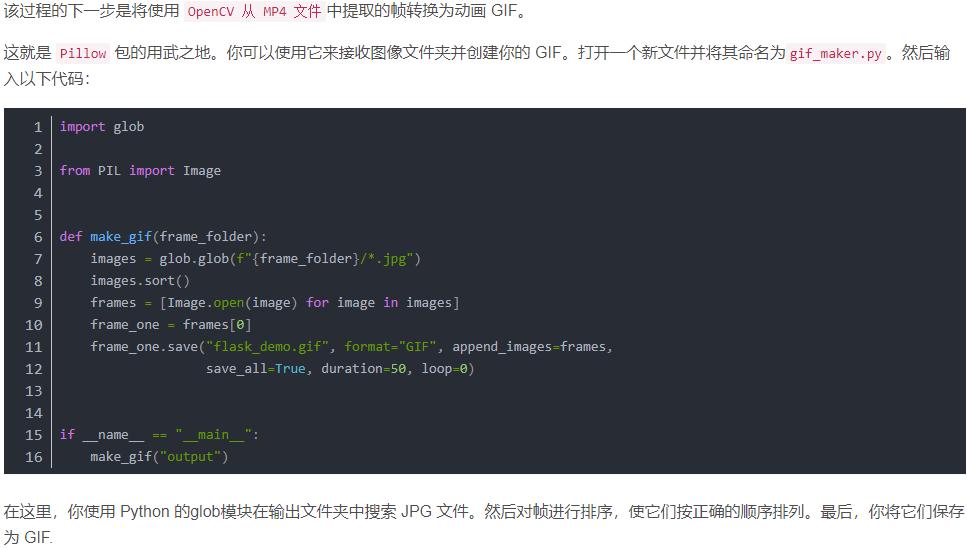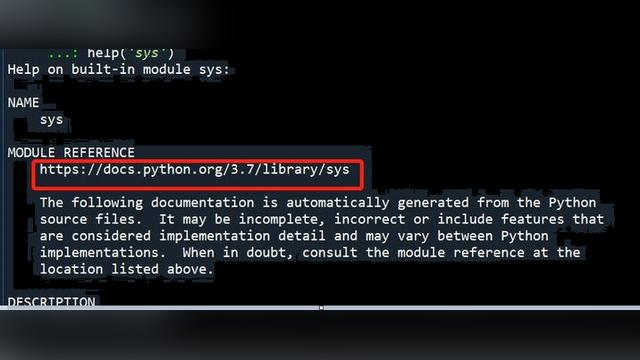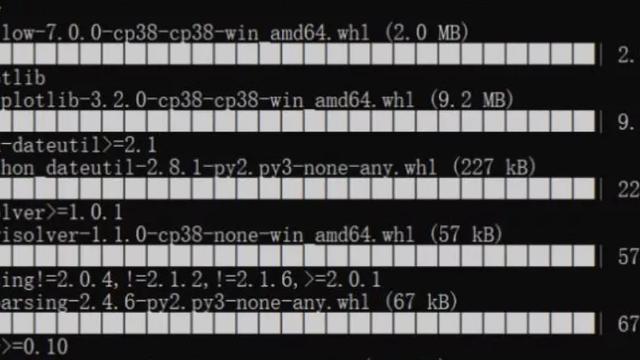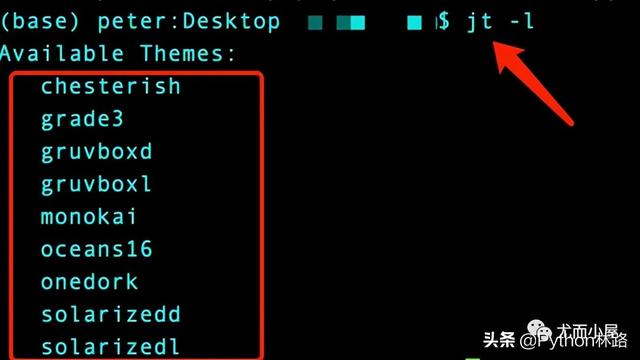Python 命令行之旅:使用 argparse 实现 git 命令

作者:HelloGitHub-Prodesire
前言
在前面三篇介绍 argparse 的文章中,我们全面了解了 argparse 的能力,相信不少小伙伴们都已经摩拳擦掌,想要打造一个属于自己的命令行工具。
本文将以我们日常工作中最常见的 git 命令为例,讲解如何使用 argparse 库来实现一个真正可用的命令行程序。
本系列文章默认使用 Python 3 作为解释器进行讲解。若你仍在使用 Python 2,请注意两者之间语法和库的使用差异哦~
git 常用命令
大家不妨回忆一下,平时最常使用 git 子命令都有哪些?
当你写好一段代码或增删一些文件后,会用如下命令查看文件状态:
git status
确认文件状态后,会用如下命令将的一个或多个文件(夹)添加到暂存区:
git add [pathspec [pathspec ...]]
然后使用如下命令提交信息:
git commit -m "your commit message"
最后使用如下命令将提交推送到远程仓库:
git push
我们将使用 argparse 和 gitpython 库来实现这 4 个子命令。
关于 gitpython
gitpython[1] 是一个和 git 仓库交互的 Python 第三方库。我们将借用它的能力来实现真正的 git 逻辑。
安装:
pip install gitpython
思考
在实现前,我们不妨先思考下会用到 argparse 的哪些功能?整个程序的结构是怎样的?
argparse
- 要实现子命令,那么之前介绍到的 嵌套解析器 必不可少
- 当用户键入子命令时,子命令所对应的子解析器需要作出响应,那么需要用到子解析器的 set_defaults 功能
- 针对 git add [pathspec [pathspec ...]],我们需要实现位置参数,而且数量是任意个
- 针对 git commit --message msg 或 git commit -m msg,我们需要实现选项参数,且即可长选项,又可短选项
程序结构
- 命令行程序需要一个 cli 函数来作为统一的入口,它负责构建解析器,并解析命令行参数
- 我们还需要四个 handle_xxx 函数响应对应的子命令
则基本结构如下:
import os import argparse from git.cmd import Git def cli(): """ git 命名程序入口 """ pass def handle_status(git, args): """ 处理 status 命令 """ pass def handle_add(git, args): """ 处理 add 命令 """ pass def handle_commit(git, args): """ 处理 -m <msg> 命令 """ pass def handle_push(git, args): """ 处理 push 命令 """ pass if __name__ == '__main__': cli()
下面我们将一步步地实现我们的 git 程序。
实现
假定我们在 argparse-git.py[2] 文件中实现我们的 git 程序。
构建解析器
我们需要构建一个父解析器,作为程序的根解析器,程序名称指定为 git。然后在上面添加子解析器,为后续的子命令的解析做准备:
def cli(): """ git 命名程序入口 """ parser = argparse.ArgumentParser(prog='git') subparsers = parser.add_subparsers( title='These are common Git commands used in various situations', metavar='command')
add_subparsers 中的 title 和 metavar 参数主要用于命令行帮助信息,最终的效果如下:
usage: git [-h] command ... optional arguments: -h, --help show this help message and exit These are common Git commands used in various situations: command ...
status 子命令
我们需要在 cli 函数中添加一个用于解析 status 命令的子解析器 status_parser,并指定其对应的处理函数为 handle_status。
def cli(): ... # status status_parser = subparsers.add_parser( 'status', help='Show the working tree status') status_parser.set_defaults(handle=handle_status)
需要说明的是,在
status_parser.set_defaults 函数中,能接收任意名称的关键字参数,这个参数值会存放于父解析器解析命令行参数后的变量中。
比如,在本文示例程序中,我们为每个子解析器定义了 handle,那么 args = parser.parse_args() 中的 args 将具有 handle 属性,我们传入不同的子命令,那么这个 handle 就是不同的响应函数。
定义了 status 的子解析器后,我们再实现下 handle_status 即可实现 status 命令的响应:
def handle_status(git, args): """ 处理 status 命令 """ cmd = ['git', 'status'] output = git.execute(cmd) print(output)
不难看出,我们最后调用了真正的 git status 来实现,并打印了输出。
你可能会对 handle_status 的函数签名感到困惑,这里的 git 和 args 是怎么传入的呢?这其实是由我们自己控制的,将在本文最后讲解。
add 子命令
同样,我们需要在 cli 函数中添加一个用于解析 add 命令的子解析器 add_parser,并指定其对应的处理函数为 handle_add。
额外要做的是,要在子解析器 add_parser 上添加一个 pathspec 位置参数,且其数量是任意的:
def cli(): ... # add add_parser = subparsers.add_parser( 'add', help='Add file contents to the index') add_parser.add_argument( 'pathspec', help='Files to add content from', nargs='*') add_parser.set_defaults(handle=handle_add)
然后,就是实现 handle_add 函数,我们需要用到表示文件路径的 args.pathspec:
def handle_add(git, args): """ 处理 add 命令 """ cmd = ['git', 'add'] + args.pathspec output = git.execute(cmd) print(output)
commit 子命令
同样,我们需要在 cli 函数中添加一个用于解析 commit 命令的子解析器 commit_parser,并指定其对应的处理函数为 handle_commit。
额外要做的是,要在子解析器 commit_parser 上添加一个 -m/--message 选项参数,且要求必填:
def cli(): ... # commit commit_parser = subparsers.add_parser( 'commit', help='Record changes to the repository') commit_parser.add_argument( '--message', '-m', help='Use the given <msg> as the commit message', metavar='msg', required=True) commit_parser.set_defaults(handle=handle_commit)
然后,就是实现 handle_commit 函数,我们需要用到表示提交信息的 args.message:
def handle_commit(git, args): """ 处理 -m <msg> 命令 """ cmd = ['git', 'commit', '-m', args.message] output = git.execute(cmd) print(output)
push 子命令
同样,我们需要在 cli 函数中添加一个用于解析 push 命令的子解析器 push_parser,并指定其对应的处理函数为 handle_push。
它同 status 子命令的实现方式一致:
def cli(): ... # push push_parser = subparsers.add_parser( 'push', help='Update remote refs along with associated objects') push_parser.set_defaults(handle=handle_push)
然后,就是实现 handle_push 函数,和 handle_status 类似:
def handle_push(git, args): cmd = ['git', 'push'] output = git.execute(cmd) print(output)
解析参数
在定义完父子解析器,并添加参数后,我们就需要对参数做解析,这项工作也是实现在 cli 函数中:
def cli(): ... git = Git(os.getcwd()) args = parser.parse_args() if hasattr(args, 'handle'): args.handle(git, args) else: parser.print_help()
- 通过 git.cmd.Git 实例化出 git 对象,用来和 git 仓库交互
- 通过 parser.parse_args() 解析命令行
- 通过 hasattr(args, 'handle') 判断是否输入了子命令。
- 由于每个子解析器都定义了 handle,那么如果当用户在命令行不输入任何命令时,args 就没有 handle 属性,那么我们就输出帮助信息
- 如果用户输入了子命令,那么就调用 args.handle,传入 git 和 args 对象,用以处理对应命令
至此,我们就实现了一个简单的 git 命令行,使用 python argparse-git.py -h 查看帮助如下:
usage: git [-h] command ... optional arguments: -h, --help show this help message and exit These are common Git commands used in various situations: command status Show the working tree status add Add file contents to the index commit Record changes to the repository push Update remote refs along with associated objects
然后我们就可以愉快地使用亲手打造的 git 程序啦!
想看整个源码,请戳 argparse-git.py[3] 。
小结
本文简单介绍了日常工作中常用的 git 命令,然后提出实现它的思路,最终一步步地使用 argparse 和 gitpython 实现了 git 程序。是不是很有成就感呢?
关于 argparse 的讲解将告一段落,回顾下 argparse 的四步曲,加上今天的内容,感觉它还是挺清晰、简单的。不过,这还只是打开了命令行大门的一扇门。
你是否想过,argparse 的四步曲虽然理解简单,但略微麻烦。有没有更简单的方式?如果我很熟悉命令行帮助语法,我能不能写个帮助字符串就把所有的命令行元信息给定义出来?然后就直接轻松愉快地获取解析后的参数信息呢?
在下篇文章中,将为大家讲解另一个站在一个全新的思路,又无比强大的库 docopt。
References
[1] gitpython: https://gitpython.readthedocs.io/en/stable/intro.html
[2] argparse-git.py: https://github.com/HelloGitHub-Team/Article/blob/master/contents/Python/cmdline/argparse-git.py
[3] argparse-git.py: https://github.com/HelloGitHub-Team/Article/blob/master/contents/Python/cmdline/argparse-git.py

『讲解开源项目系列』——让对开源项目感兴趣的人不再畏惧、让开源项目的发起者不再孤单。跟着我们的文章,你会发现编程的乐趣、使用和发现参与开源项目如此简单。欢迎加入我们,让更多人爱上开源、贡献开源~


























